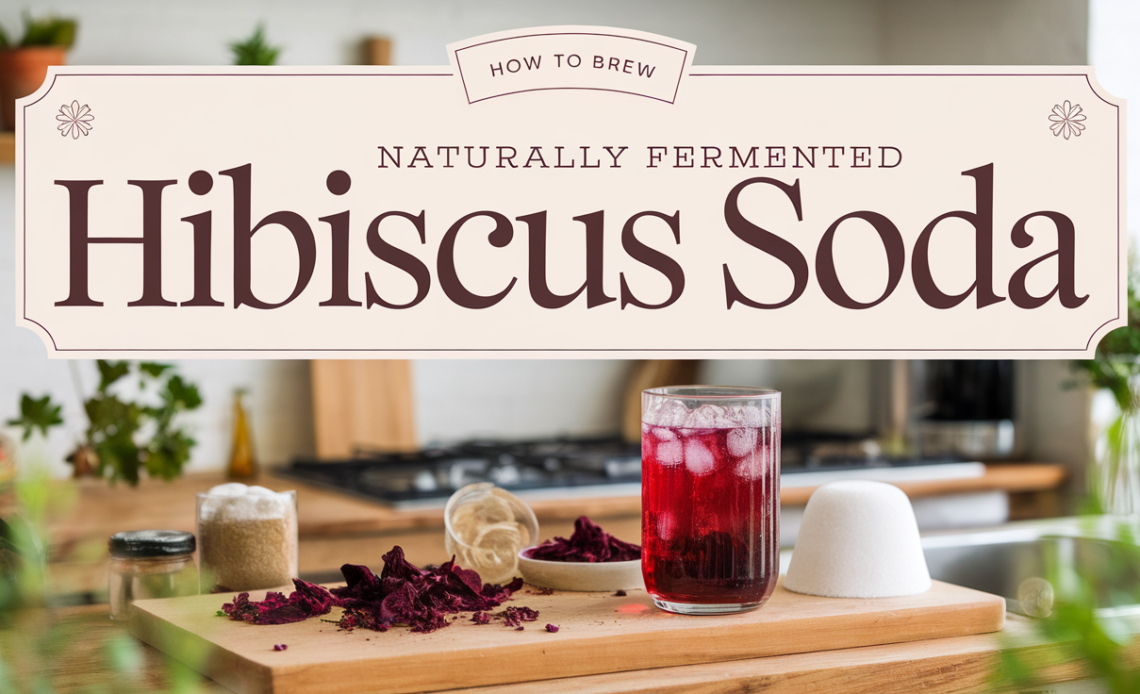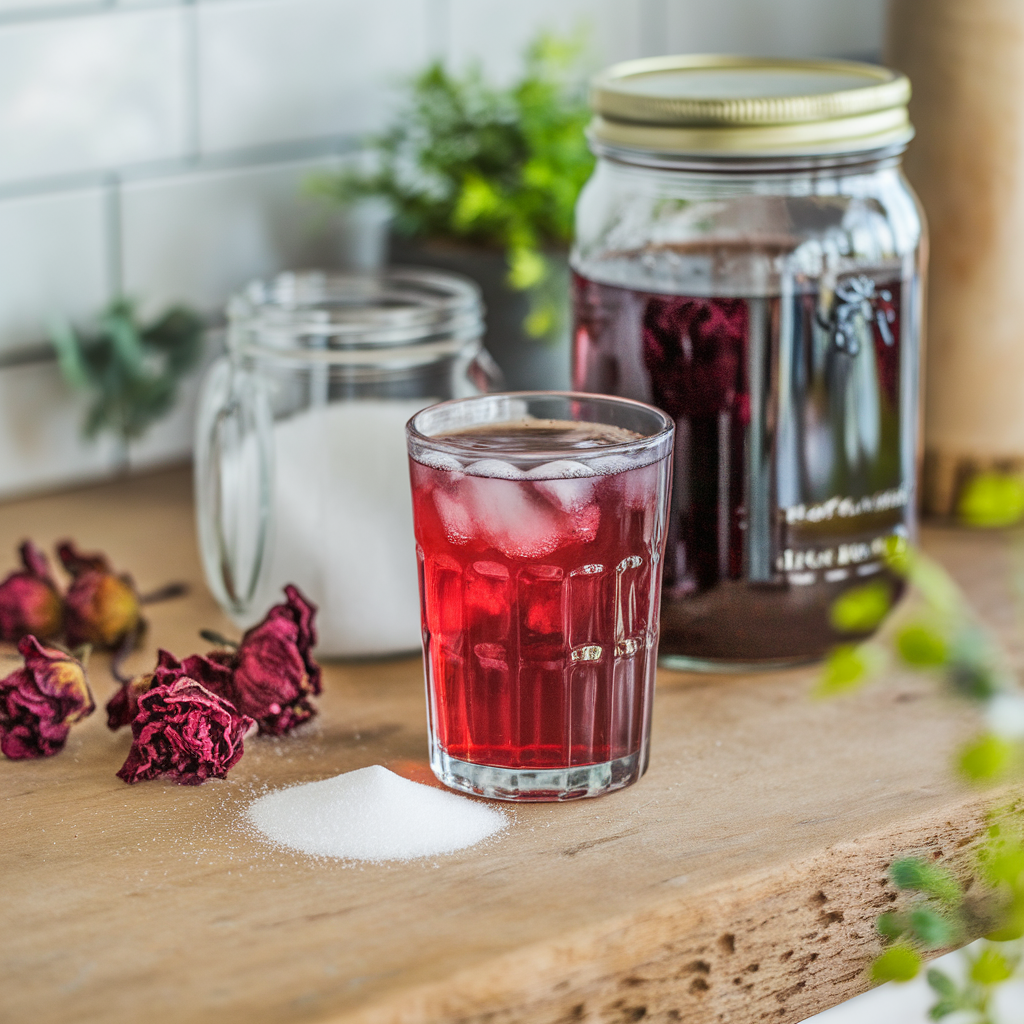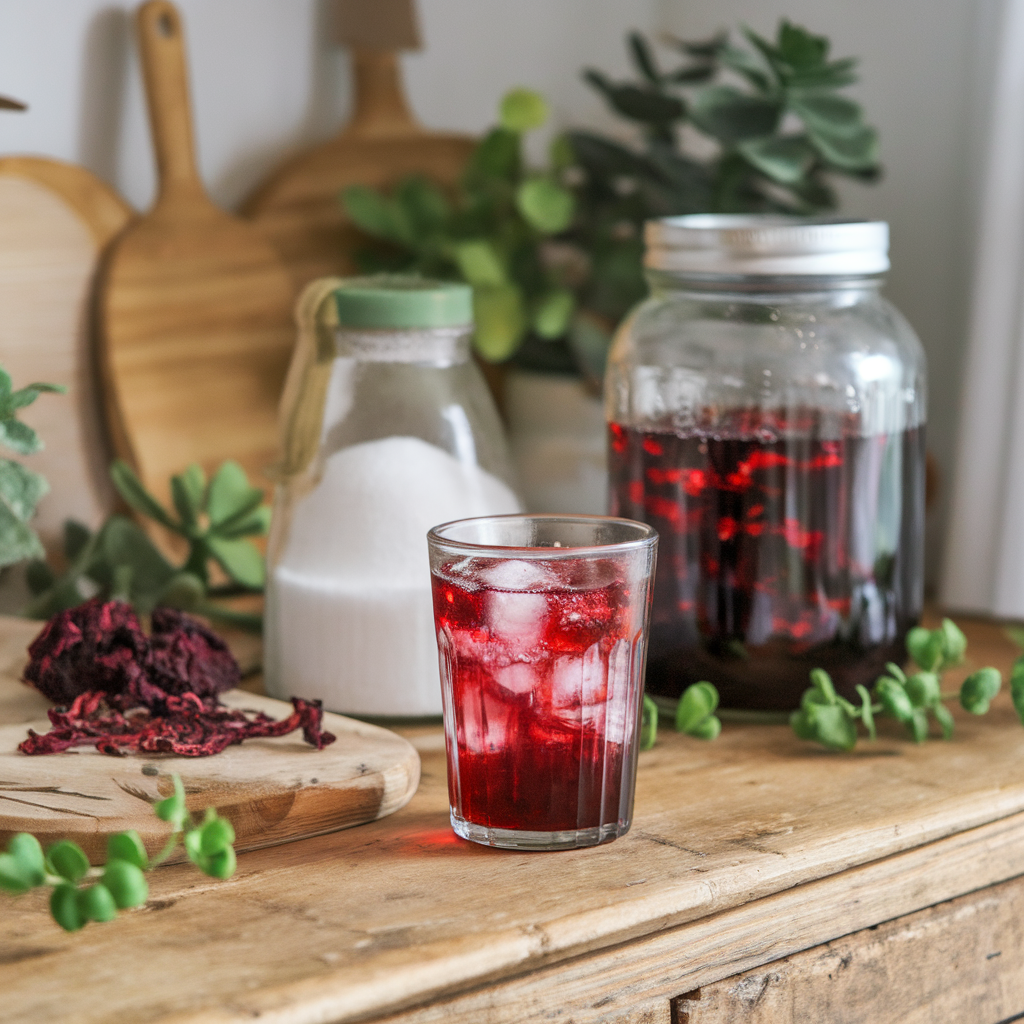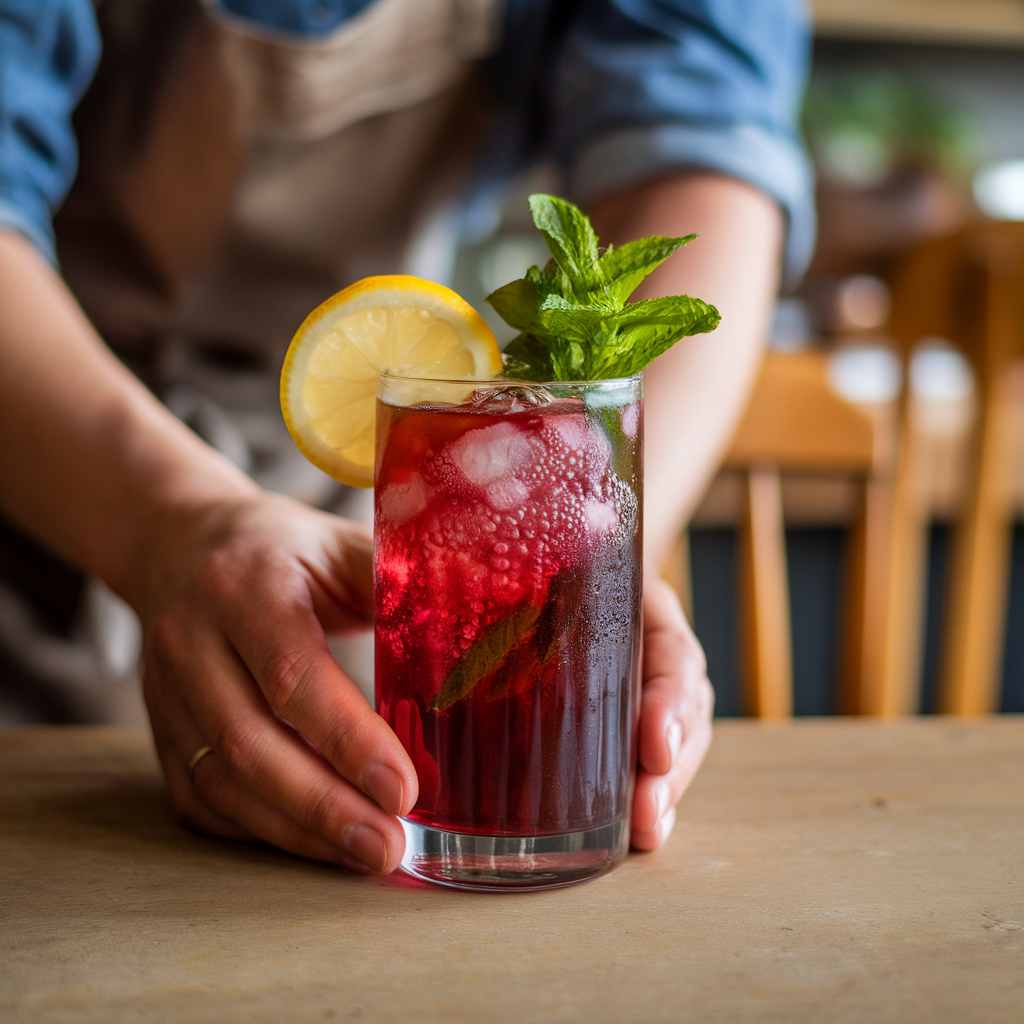
In today’s fast-paced world, there’s a growing movement towards healthier alternatives to sugary sodas. Many people are turning to fermented drinks like kombucha and ginger bug sodas as natural, healthy refreshment options. If you’re someone who enjoys experimenting with flavors and creating your own beverages at home, then you’re in for a treat! In this article, we’ll dive deep into the process of making naturally fermented hibiscus soda. This delicious, tangy, and refreshing drink is packed with flavor and health benefits, and it’s simple to make with a few key ingredients.
Hibiscus, known for its deep red color and tart flavor, is not only a visually stunning flower but also a health powerhouse. Packed with antioxidants, vitamin C, and other essential nutrients, hibiscus has long been used in traditional medicine to support the immune system, lower blood pressure, and improve digestive health. When paired with the natural fermentation process, it creates a drink that is both nutritious and satisfying.
This guide will take you step-by-step through the process of brewing naturally fermented hibiscus soda, using ingredients like a ginger bug, elderberry lemonade, and other natural elements that will transform a simple beverage into a bubbly, probiotic-packed drink.
Ingredients You’ll Need for Naturally Fermented Hibiscus Soda
To make this naturally fermented hibiscus soda, you’ll need a few ingredients that work together to create the perfect balance of flavor, effervescence, and health benefits. Below is a list of essential ingredients:
- Dried Hibiscus Flowers – Hibiscus is the star of this recipe, lending both color and tartness. You’ll need about ½ cup of dried hibiscus flowers, which you can find at health food stores or online.
- Sugar – For fermentation to occur, sugar is essential. The sugar acts as food for the bacteria and yeast in the fermentation process, helping to create that signature fizziness. For a more natural touch, you can use raw cane sugar, honey, or maple syrup.
- Ginger Bug – This is the most important starter culture for your fermented soda. A ginger bug is a naturally fermented culture made from ginger, sugar, and water. It contains beneficial bacteria and wild yeasts that kickstart the fermentation process. You’ll need about ½ cup of ginger bug liquid for this recipe.
- Filtered Water – Water is the base for brewing your hibiscus soda. Make sure to use filtered water, as tap water may contain chlorine or other chemicals that can inhibit the fermentation process.
- Elderberry Lemonade (Optional) – Adding elderberry lemonade to your hibiscus soda will enhance its flavor profile and add an extra boost of antioxidants. You can either make your own elderberry lemonade or buy a premade version. It’s an optional addition, but highly recommended for extra health benefits and flavor complexity.
- Lemon or Lime Juice – A splash of fresh lemon or lime juice will add a citrusy brightness to the soda, balancing out the tartness of the hibiscus and the sweetness of the sugar.

The Health Benefits of Fermented Hibiscus Soda
Before we dive into the brewing process, it’s worth mentioning the numerous health benefits of hibiscus soda, particularly when it is naturally fermented:
- Probiotic-Rich – Naturally fermented drinks like kombucha and ginger bug soda are loaded with probiotics, beneficial bacteria that promote gut health. These probiotics can improve digestion, enhance nutrient absorption, and boost the immune system.
- Antioxidant-Packed – Hibiscus flowers are rich in antioxidants, which help to fight free radicals in the body. This can contribute to reducing inflammation and promoting overall health.
- Supports Immune Health – The combination of hibiscus and elderberry lemonade makes this soda an excellent immune booster. Elderberry is known for its ability to fight off colds and flu, while hibiscus helps to support a healthy inflammatory response.
- Low in Sugar – Since this recipe relies on natural fermentation to create carbonation, it contains far less sugar than most store-bought sodas. Additionally, the fermentation process reduces the overall sugar content as the yeast consumes some of the sugars.
- Hydration – Hibiscus soda is a hydrating drink that can quench your thirst while providing essential nutrients and electrolytes.
The Brewing Process: Step-by-Step Guide to Making Naturally Fermented Hibiscus Soda
Now that you understand the ingredients and health benefits, it’s time to start brewing your naturally fermented hibiscus soda! Follow these simple steps, and you’ll have your own batch of probiotic-rich, homemade soda in no time.
Step 1: Prepare the Hibiscus Tea
Start by preparing a strong hibiscus tea base. To do this, place ½ cup of dried hibiscus flowers into a heatproof container. Bring 4 cups of filtered water to a boil, then pour the hot water over the hibiscus flowers. Stir the mixture and let it steep for 15-20 minutes, allowing the flavors to develop. After steeping, strain the hibiscus flowers out of the liquid and let it cool to room temperature.
Step 2: Add the Sugar
Once the hibiscus tea has cooled, it’s time to add the sugar. For this recipe, you’ll need about ½ cup of sugar (you can also use raw honey or maple syrup as alternatives). Stir the sugar into the hibiscus tea until it’s fully dissolved. This is crucial for fermentation, as the yeast in the ginger bug needs the sugar to thrive.

Step 3: Prepare the Ginger Bug
If you haven’t already prepared your ginger bug, now’s the time to do so! A ginger bug is a naturally fermented culture that is made by combining ginger, sugar, and water. To make your ginger bug, finely chop a small piece of fresh ginger (about 2-3 tablespoons), and combine it with 1 cup of filtered water and 2 tablespoons of sugar. Leave the mixture at room temperature, covered with a cloth, for about 5-7 days. During this time, you should start to see bubbles forming, indicating that the fermentation process has begun.
Once your ginger bug is ready, strain out the ginger pieces and use the liquid in your hibiscus soda recipe.
Step 4: Combine the Hibiscus Tea with the Ginger Bug
Take your ginger bug liquid (about ½ cup) and pour it into the cooled hibiscus tea mixture. Stir well to combine. The ginger bug is full of wild yeasts and beneficial bacteria, which will start the fermentation process in your hibiscus tea.
Step 5: Add the Elderberry Lemonade (Optional)
At this point, you can add a splash of elderberry lemonade for extra flavor and health benefits. This is completely optional, but it will give your hibiscus soda an added dimension of taste. If you’re using store-bought elderberry lemonade, just add about ½ cup to the mix. If you prefer to make your own, combine elderberries, honey, lemon juice, and water in a saucepan, simmer for 20 minutes, and strain before adding it to your hibiscus tea.
Step 6: Ferment the Mixture
Pour the hibiscus tea and ginger bug mixture into a clean glass jar or fermenting vessel. Leave about 1-2 inches of space at the top to allow for expansion during fermentation. Cover the jar with a cloth or a fermentation lid to allow air to flow in while keeping out contaminants. Place the jar in a warm, dark spot for 2-3 days to ferment.
During the fermentation process, the wild yeast in the ginger bug will consume the sugar in the tea, producing carbon dioxide and creating natural carbonation. Check the mixture daily to taste it and ensure it’s fermenting to your desired level of tanginess and fizziness.

Step 7: Bottle the Soda
After 2-3 days of fermentation, your hibiscus soda should be bubbly and tangy. If you’re happy with the flavor, it’s time to bottle it up. Using a funnel, pour the fermented soda into bottles, leaving about 1 inch of space at the top. You can use glass bottles with a tight-fitting cap (like swing-top bottles), as these will help preserve the carbonation.
Once bottled, store the soda in the refrigerator. The cold temperature will slow down the fermentation process and preserve the bubbles. Your hibiscus soda is now ready to enjoy!
Tips for Success and Variations
- Fermentation Time: The longer you ferment your hibiscus soda, the more tangy and fizzy it will become. However, be careful not to over-ferment, as it can turn sour. It’s best to check the flavor after 2-3 days of fermentation.
- Flavor Variations: You can experiment with other flavors to create unique combinations. Try adding a few sprigs of fresh mint, a few slices of cucumber, or even a touch of vanilla extract to your hibiscus soda for a personalized touch.
- Sugar Alternatives: While sugar is essential for fermentation, you can experiment with alternatives like honey, maple syrup, or coconut sugar to add different flavors to your soda.
- Kombucha Twist: If you love kombucha, you can add a bit of kombucha starter liquid to your hibiscus tea to boost the fermentation process and add even more beneficial probiotics to your soda.
Conclusion
Making naturally fermented hibiscus soda is a fun and rewarding way to create your own refreshing, healthy drinks at home. By harnessing the power of fermentation with a ginger bug and adding a splash of elderberry lemonade, you can enjoy a delicious beverage that’s not only free from artificial additives but also packed with probiotics and antioxidants.
Fermented drinks like kombucha, ginger bug soda, and hibiscus soda are not only great for your gut health but also provide a unique, tangy flavor profile that you can’t find in traditional sodas. So, why not give this naturally fermented hibiscus soda a try? It’s easy, fun, and a great way to enjoy a healthy alternative to sugary drinks while reaping the benefits of lacto-fermentation. Cheers to your health and creativity!




